Creative minds often turn to nature for innovative design solutions. We have collected some eye-catching buildings that were inspired by butterflies and managed to grasp the lightness and beauty of these ethereal creatures with their finest wings and intrinsic shape.
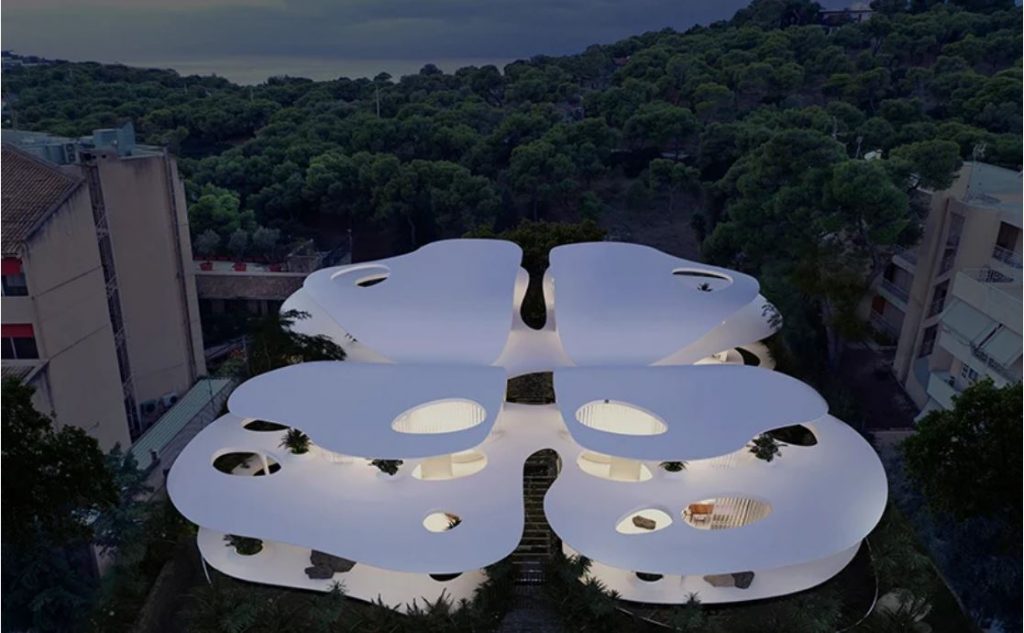
Local 314 Architecture Studio has proposed a butterfly-shaped residential building in five minutes walking distance from the sea in Athens, Greece. The complex comprises four independent units characterized by organic curves inspired by the shape of the butterfly, whose wings extend outwards, from the dwellings to the garden area.
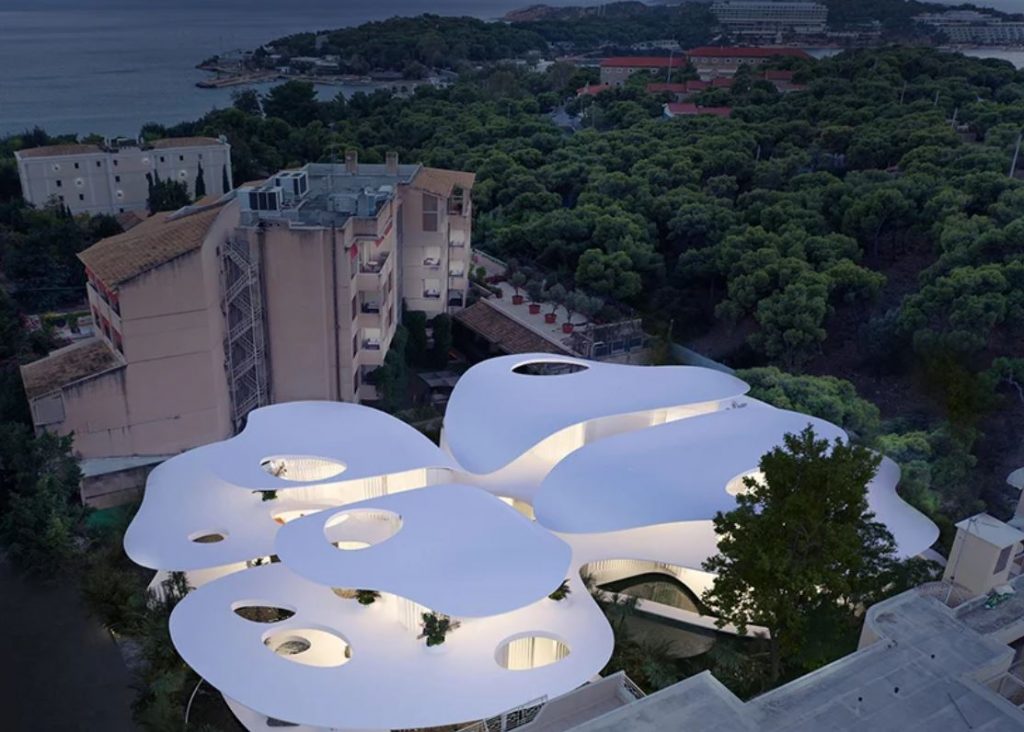
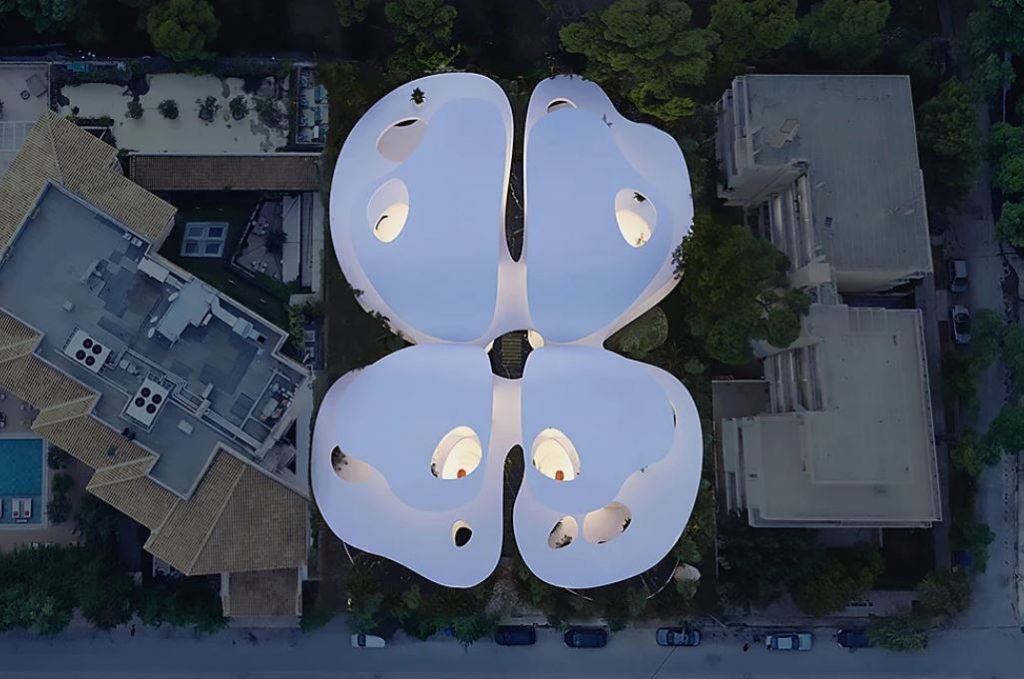
Butterfly residential proposal by 314 Architecture Studio
The wing volumes, bent to provide privacy, generate open terraces on the top floor that let occupants enjoy sea views while offering shading for the ground floor.
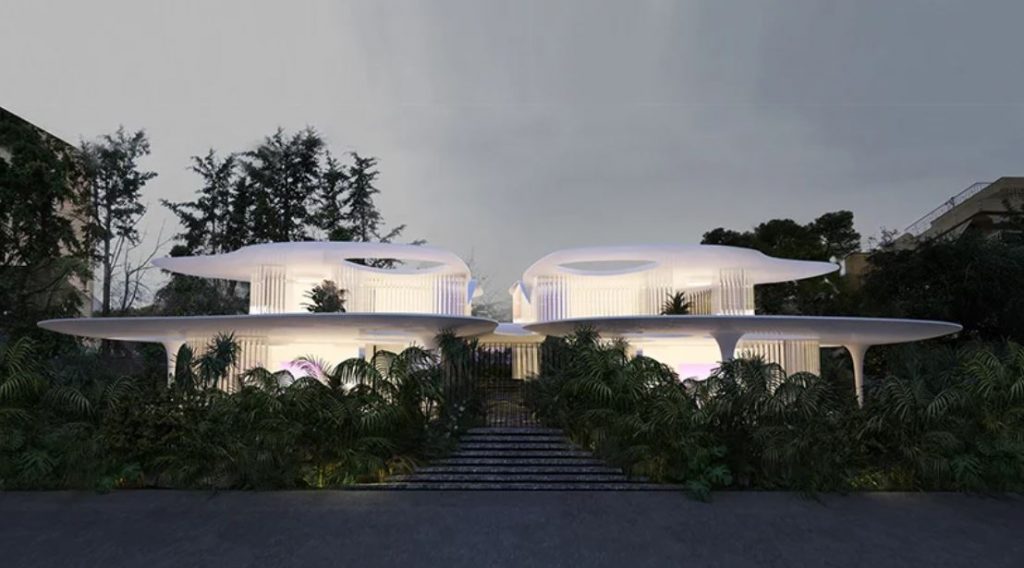
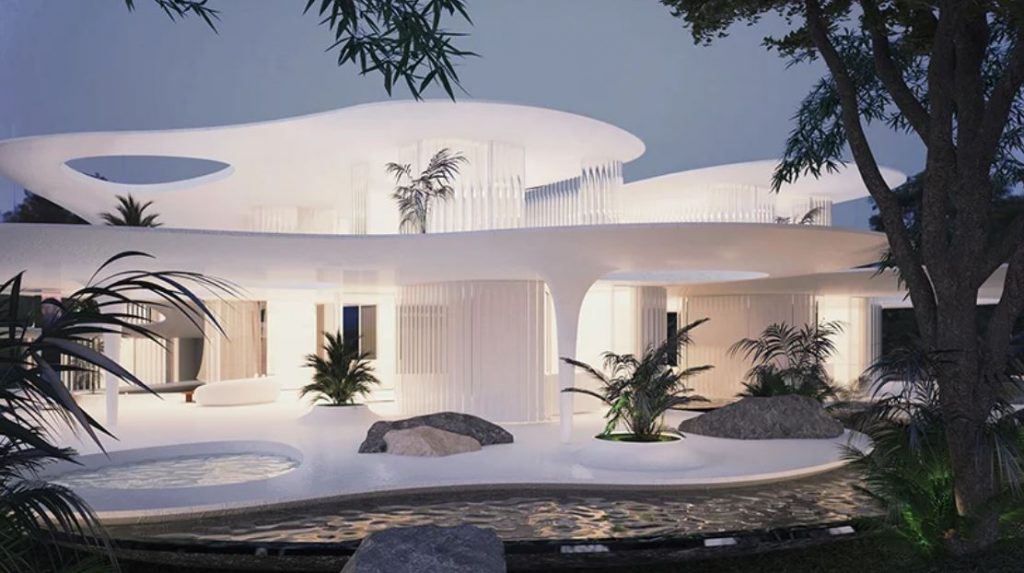
Butterfly residential proposal by 314 Architecture Studio
Solid materiality of white cement stucco used for the walls, floor and ceiling is contrasted to the transparency and glossiness of U-glass. The extensively used glass allows maximum natural light in, while acting as a distorting filter that blurs the movement of the occupants and adds to the building’s privacy.
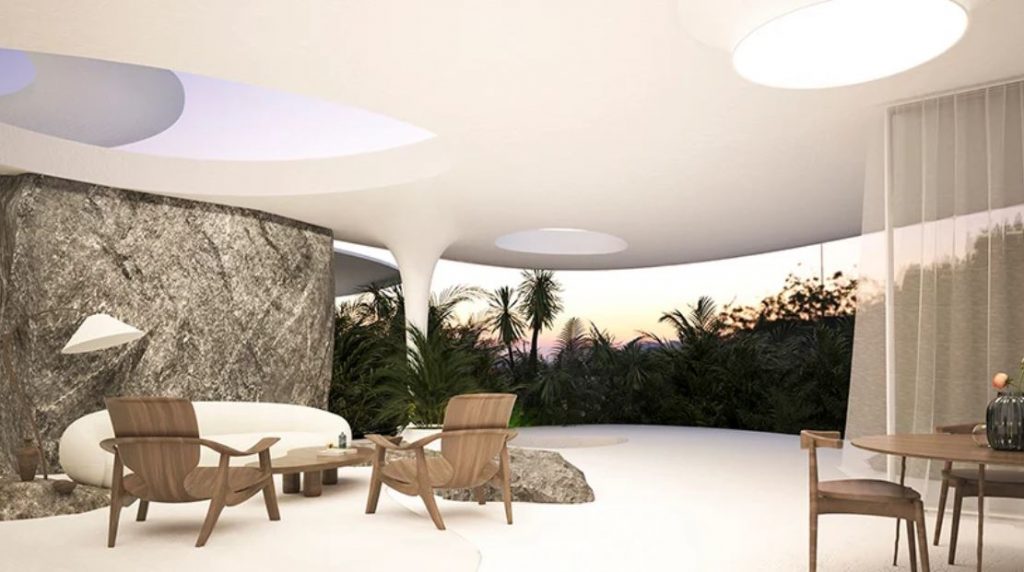
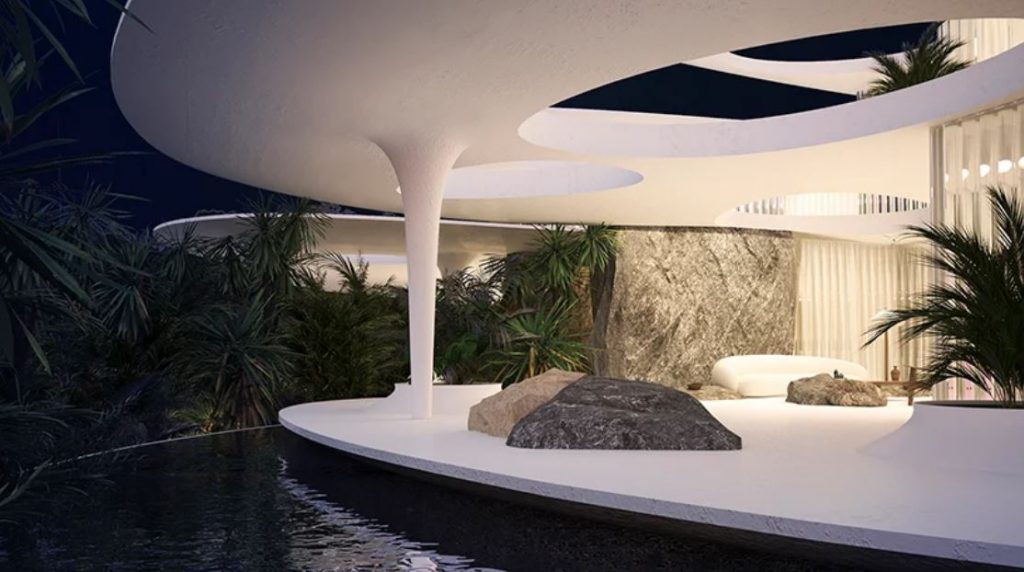
Butterfly residential proposal by 314 Architecture Studio
Rocks placed around the complex complement the composition. The bigger ones hide structural elements and store glass panels, leaving only the aesthetically necessary things in sight. Floating paths connect the ground floor balconies with the surrounding landscape with its artificial lakes and lush vegetation, thus offering an alternative route, closer to nature.
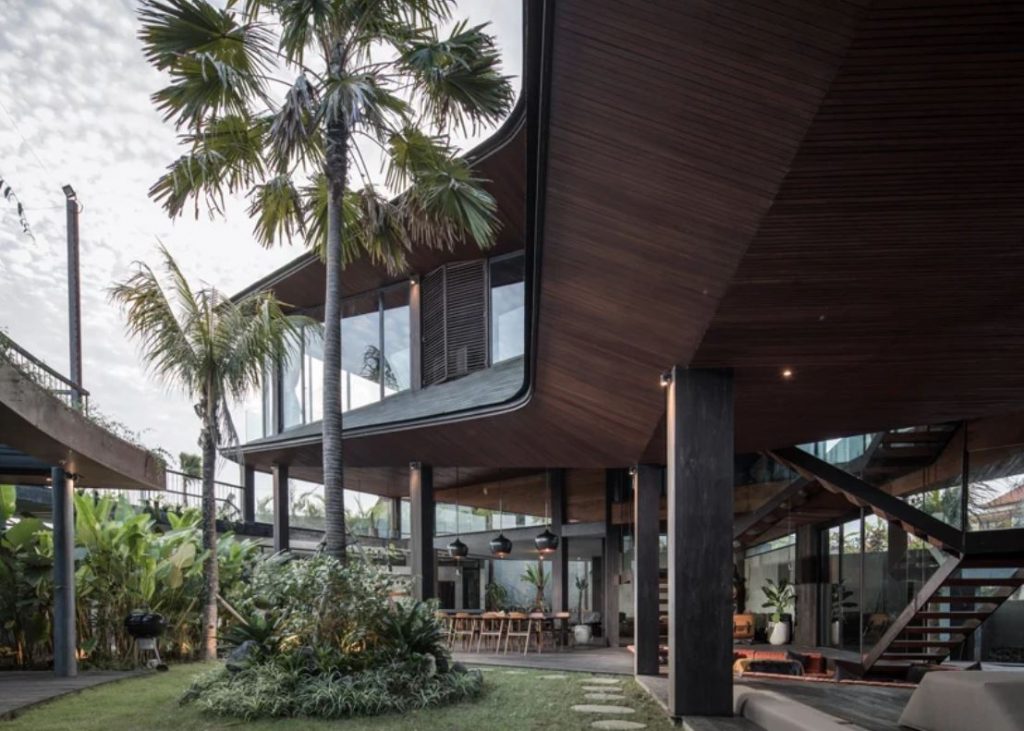
Butterfly House by Alexis Dornier
Realized as part of the Penjiwaan community in Bali, Butterfly House by Ubud-based architect Alexis Dornier, also blurs the line between indoor and outdoor environments. Raised off the ground on stilts, the plan of the house is formed in two components: a cross and a circle.
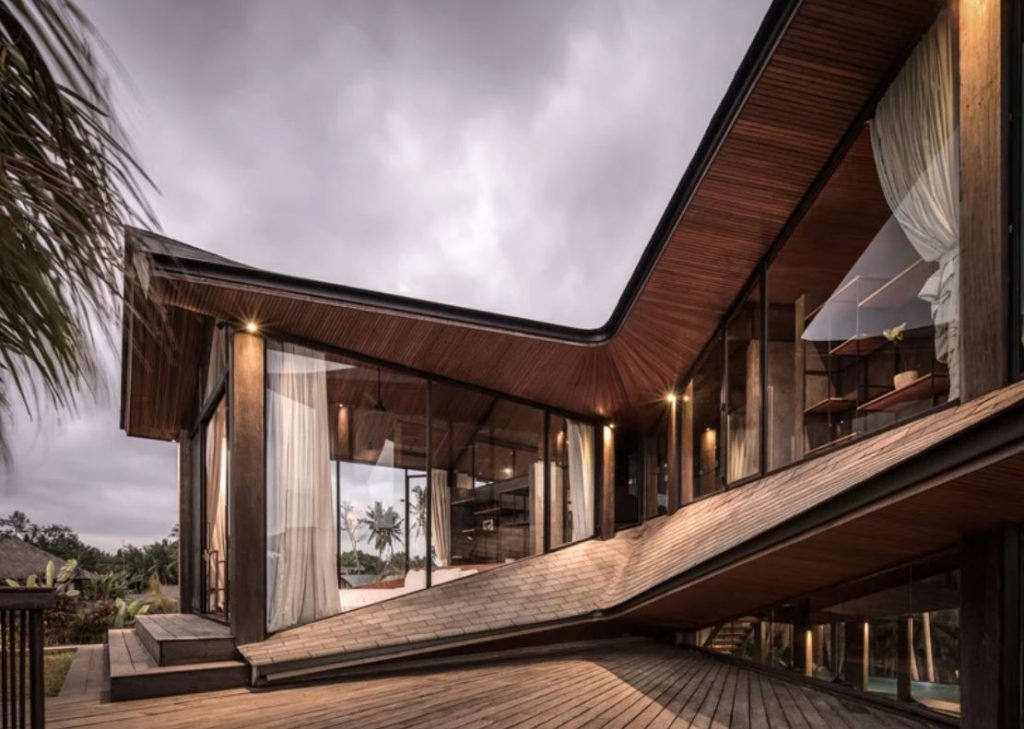
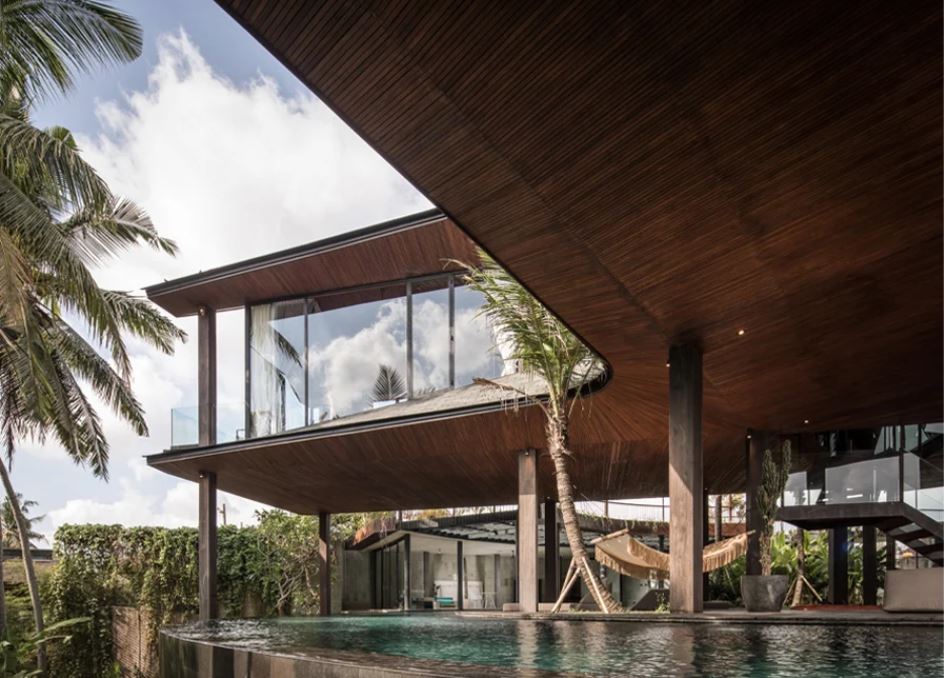
Butterfly House by Alexis Dornier
The cross marks the primary building element. At first floor level, the cross is elevated and holds more private bedroom spaces projecting in four different directions, while on the ground floor it comprises social spaces such as kitchen, living and dining areas situated within the columns.
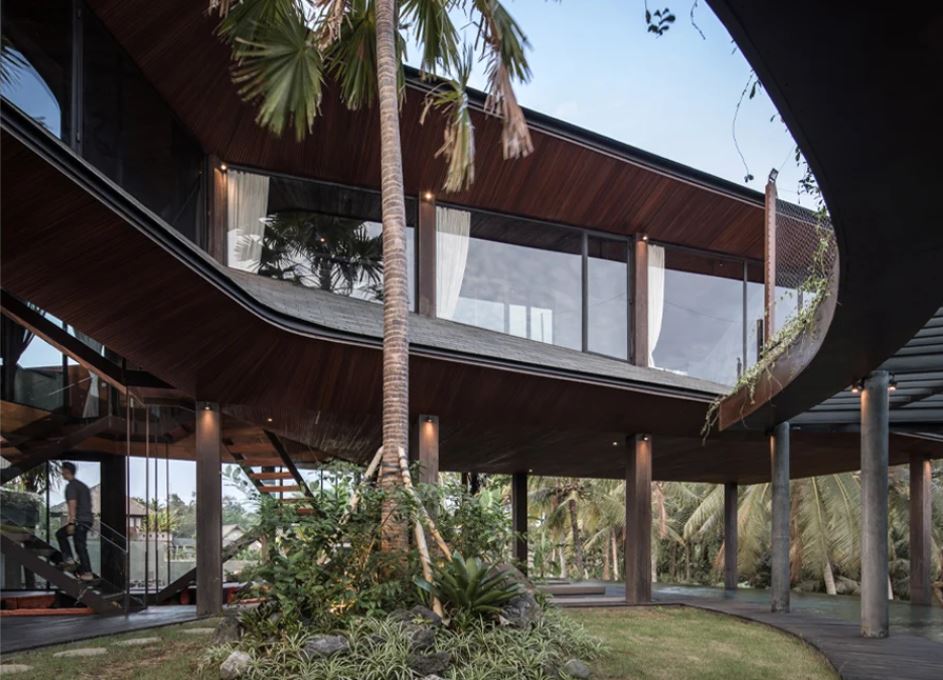
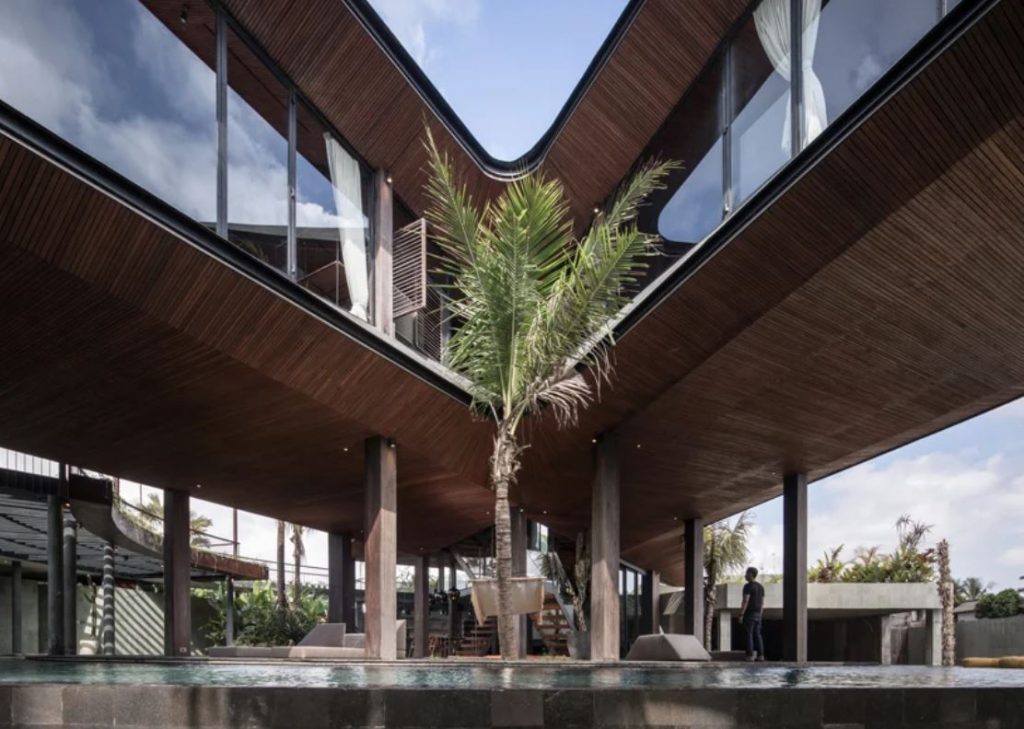
Butterfly House by Alexis Dornier
Thanks to the open structure, this area creates a continuous landscape that seamlessly merges with the surrounding nature. Surrounding the cross is the circle that contains spaces such as the atelier, pool and sound studio.
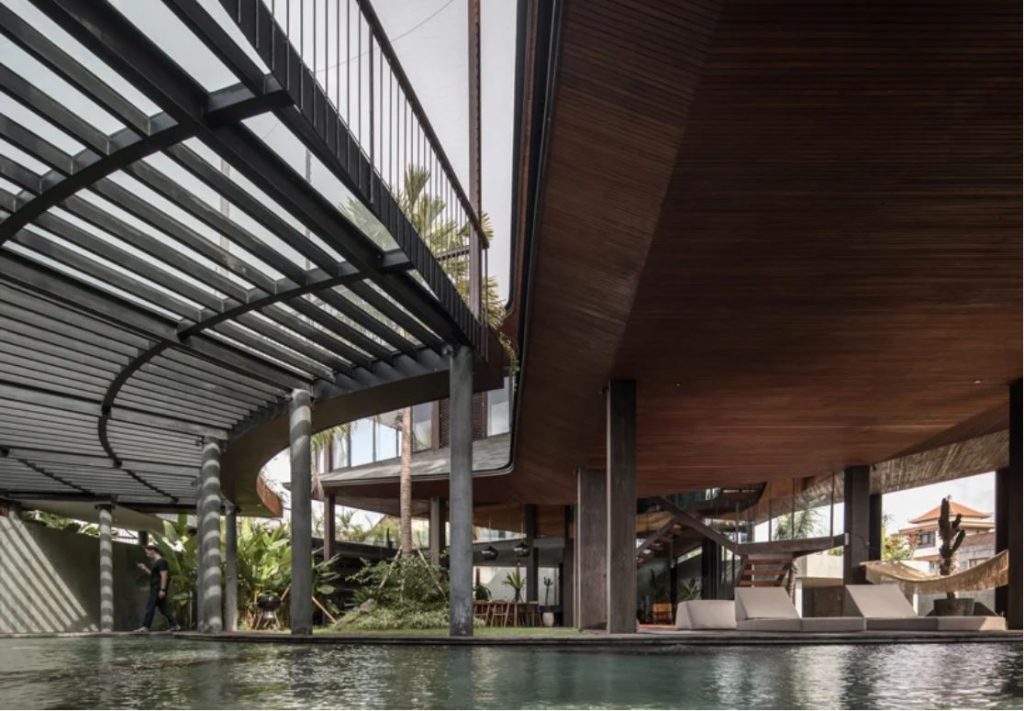
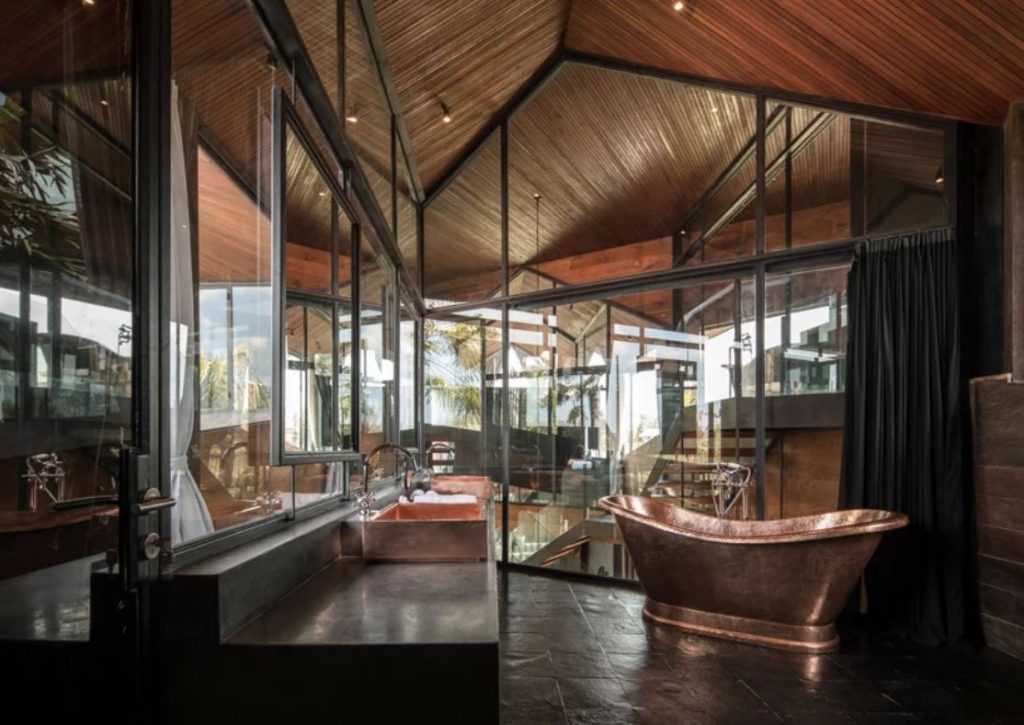
Butterfly House by Alexis Dornier
Referencing surrounding architecture are the vernacular shape of the roof and the material palette dominated by the use of reclaimed timber.
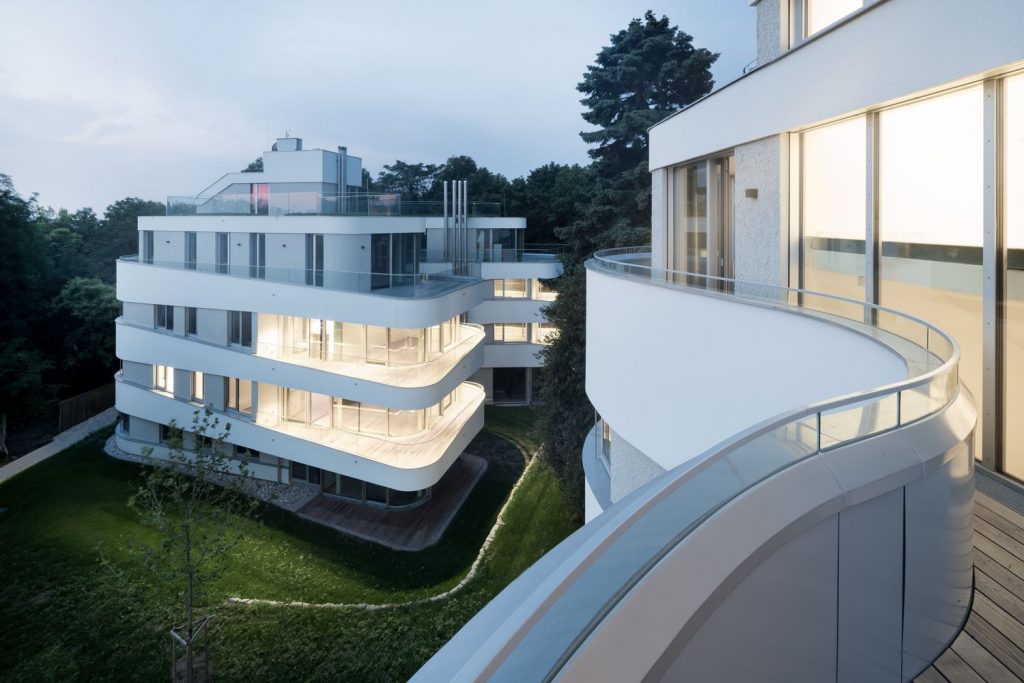
HoWa residential complex by Gerner Gerner Plus
Designing HoWa, the residential complex on grounds once harboring the residence of several Austrian Federal Presidents, Vienna-based architecture practice Gerner Gerner Plus drew inspiration from the image of brimstone butterflies in a paradise garden.
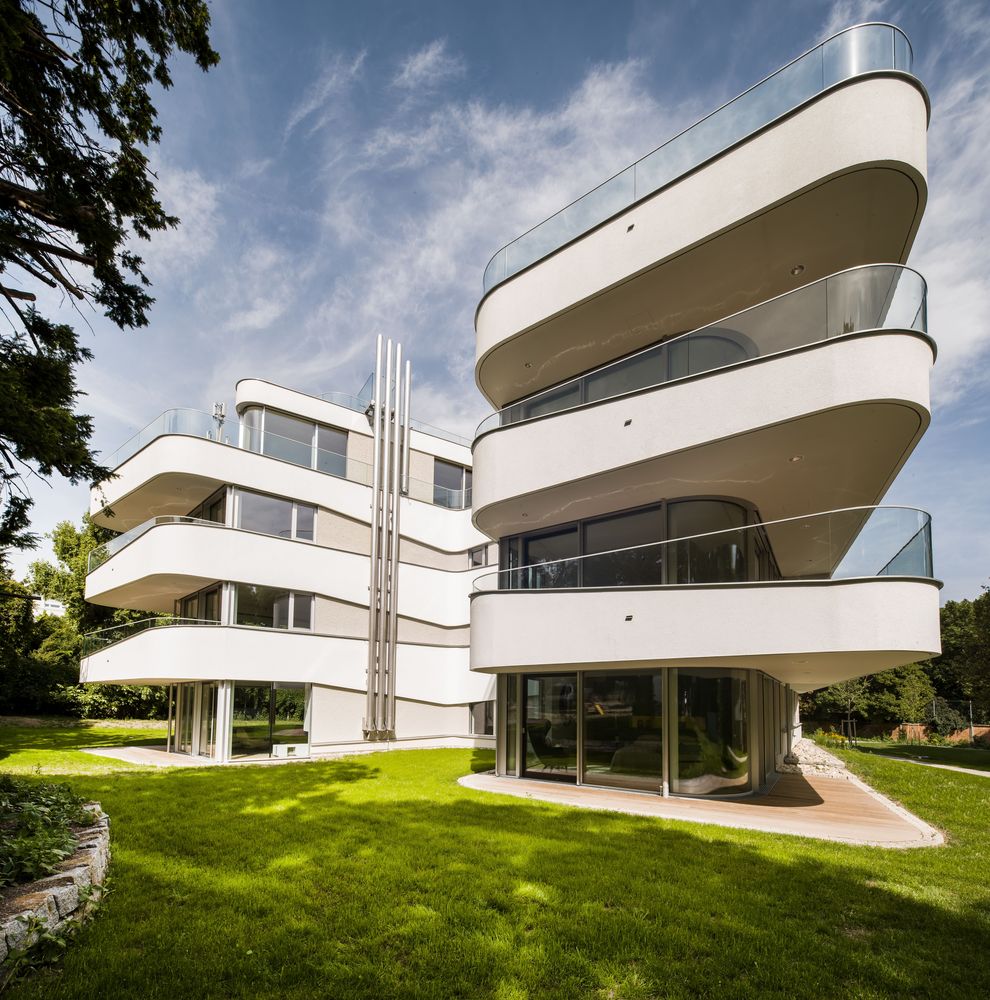
HoWa residential complex by Gerner Gerner Plus
The property encompasses five residential buildings, arranged in such a way that each living unit is not confronted with an opposite building but instead has a free outlook onto a green landscape.
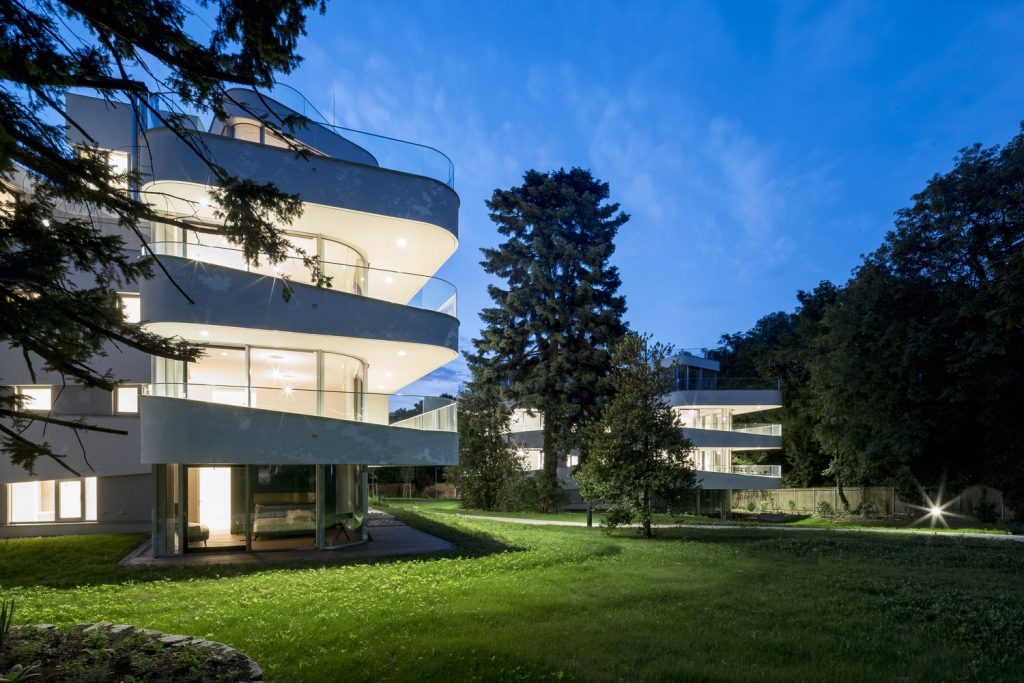
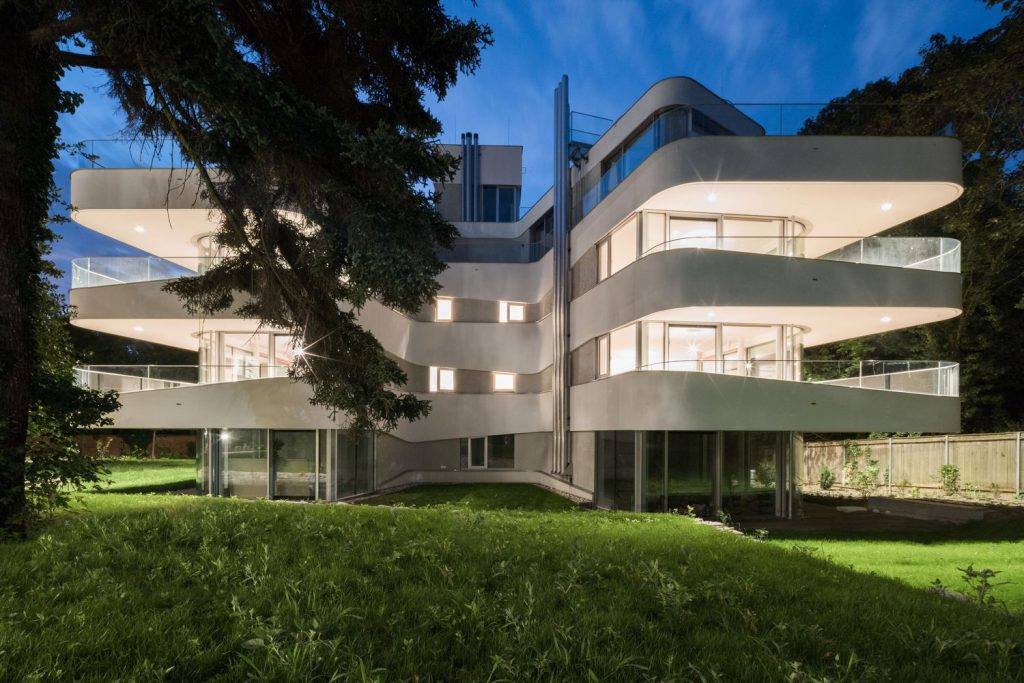
HoWa residential complex by Gerner Gerner Plus
The clay-grey façade appears to be retreating modestly into the background. The paradise-like impression is enhanced by the fact that the whole area of approx. one hectare is kept free of cars – they approach via a narrow tunnel in the subterranean garage system; strict attention was paid during construction not to damage the roots of the trees.
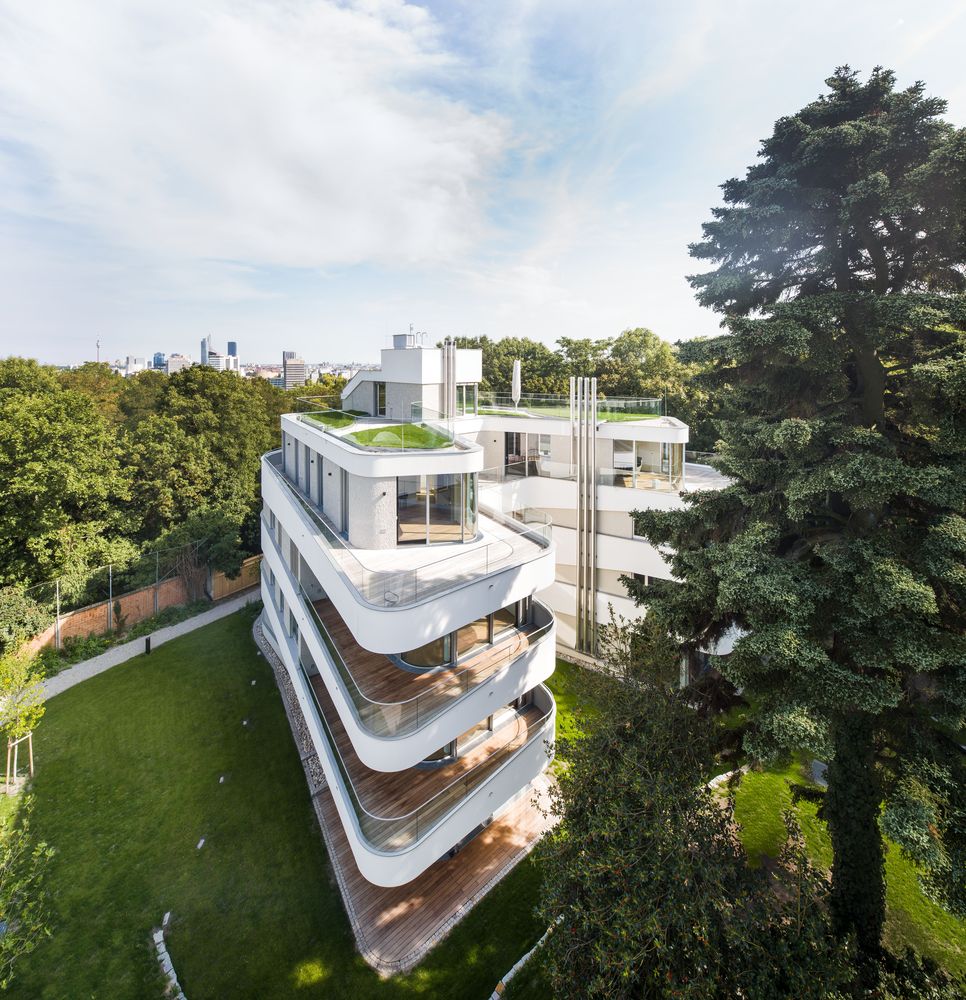
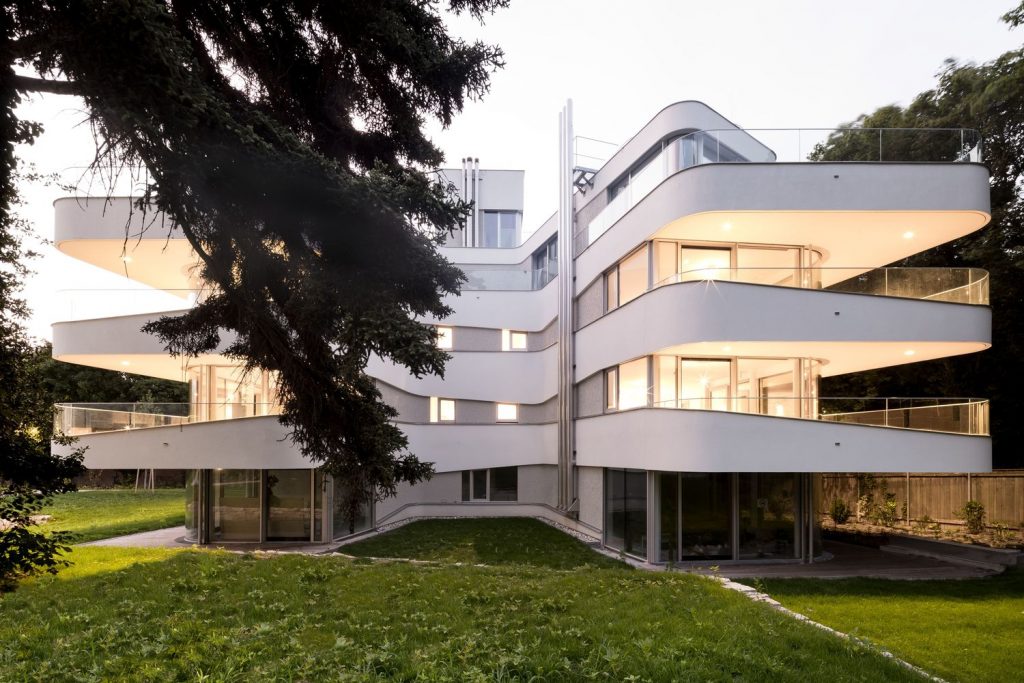
HoWa residential complex by Gerner Gerner Plus
The complex features 23 flats between 110 and 260 m² in size with a flexible floor plan and spacious balconies and terraces. To make the buildings more sustainable, the intermediate walls of the concrete framed construction is not made of plasterboard, but of brick, like the outer walls. Façade parts between the ground-reaching windows and wooden terrace doors are rendered manually in traditional handicraft.
Interested in art inspired by insects? Check out the story here.